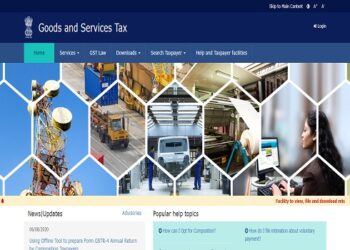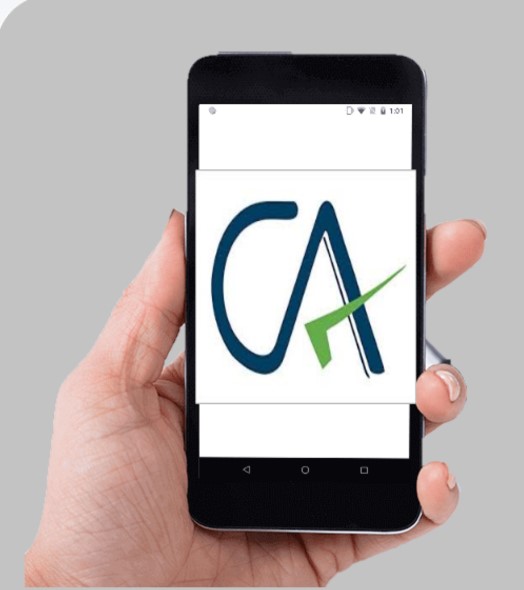The GST Council has approved introduction of ‘E-invoicing’ or ‘electronic invoicing’ in a phased manner in it’s 37th meeting held on 20.09.2019 for reporting of Business to Business (B2B) invoices to GST System, starting from 1st January 2020 on voluntary basis. The main motive behind such e invoicing is to reduce false invoice generation and false credit claim. It will be made applicable in a phased manner and from 1st January 2020 it will be made applicable on voluntary basis for Businesses with turnover above 500 crore and later from 01.02.2020 it will be made applicable on voluntary basis for business with turnover above Rs. 100 crore and from 01.04.2020 it will be made compulsory for both the above category of businesses.
What is e-invoice?
E-invoice does not mean generation of invoices from a central portal of tax department, as any such centralization will bring unnecessary restriction on the way trade is conducted. In fact, taxpayers have different requirements and expectation, which can’t be met from one software generating e-invoices from a portal for the whole country.
Invoice generated by each software may look more or less same, however, they can’t be understood by another computer system even though business users understand them fully. For example, an Invoice generated by SAP system cannot be read by a machine which is using ‘Tally’ system. Likewise there are hundreds of accounting/billing software which generate invoices but they all use their own formats to store information electronically and data on such invoices can’t be understood by the GST System if reported in their respective formats. Hence a need was felt to standardize the format in which electronic data of an Invoice will be shared with others to ensure there is interoperability of the data.
The adoption of standards will in no way impact the way user would see the physical (printed) invoice or electronic (ex pdf version) invoice. All these software would adopt the new e-Invoice standard wherein they would re-align their data access and retrieval in the standard format. However, users of the software would not find any change since they would continue to see the physical or electronic (PDF/Excel) output of the invoices in the same manner as it existed before incorporation of e-Invoice standard in the software. Thus the taxpayer would continue to use his accounting system/ERP or excel based tools or any such tool for creating the electronic invoice as s/he is using today.
To help small taxpayers adopt e-invoice system, GSTN has empaneled eight accounting & billing software which provide basic accounting and billing system free of cost to small taxpayers. Those small taxpayers who do not have accounting software today, can use one of the empaneled software products, which come in both flavors, online (cloud based) as well as offline (installed on the computer system of the user).
Many people think that e-invoice will be generated from government’s tax portal. This is a myth and invoices will continue to be generated using an Accounting or a billing software, keeping in view the varied need of item master, buyer master, UQC etc. along with sub-second response from IR Portal (IRP). Thus, direct creation/generation of e-invoice from GST portal or any other government portal is not envisaged/planned.
Small taxpayers can use one of the eight free accounting/billing software currently listed by GSTN. Also, GSTN will provide Offline Tool where data of an invoice, generated on paper can be entered which in turn will create JSON file for uploading on the IRP. Taxpayers can also use one of the commercially available accounting/billing software for this purpose. All accounting and billing software companies are being separately asked to adopt the e-invoice standard so that their users can generate the JSON from the software and upload the same on the IRP.
Process of making e-invoice:
The invoice data will be uploaded on the IRP (Invoice Registration Portal), which will also generate the hash in order to verify it and then digitally sign it with the private key of the IRP. In case the taxpayer submits hash also along with invoice data, the same will be validated by IRN system. The IRP will sign the e-invoice along with hash and the e-invoice signed by the IRP will be a valid e-invoice and used by GST/E-Way bill system. The invoices will be uploaded one by one on IRP by the businessman.
The IRP will also generate a QR code containing the unique IRN (hash) along with some important parameters of invoice and digital signature so that it can be verified on the central portal as well as by an Offline App. This will be helpful for tax officers checking the invoice on the roadside where Internet may not be available all the time. The web user will get a printable form with all details including QR code. The QR code will consist of the following e-invoice parameters:
- GSTIN of supplier
- GSTIN of Recipient
- Invoice number as given by Supplier
- Date of generation of invoice
- Invoice value (taxable value and gross tax)
- Number of line items.
- HSN Code of main item (the line item having highest taxable value)
- Unique Invoice Reference Number (hash)
The offline app will be provided on the IRP for anyone to download to authenticate the QR code of the invoice offline and its basic details. However, to see the whole invoice, one will have to connect to the portal and verify and see the details online. The facility to download entire invoice will be provided to tax officers, the way it is currently available under E-way bill system.
If you need assistance you can ask a question to our expert and get the answer within an hour or post a comment about your views on the post and also subscribe to our newsletter for latest weekly updates.














Thank you for sharing such a nice blog. Well, I didn’t know a thing before this.
Easy to use & tracking each transaction and reconciliation.